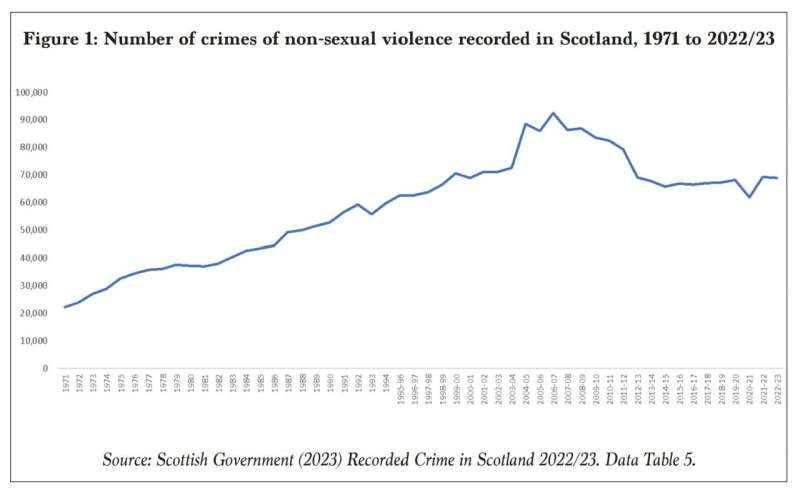
A new report led by researchers at the University of Glasgow highlights concerns around how Scotland is adapting to emerging trends around violence and young people.
Over the last two decades, Scotland has witnessed a remarkable reduction in serious violence,, which has been especially evident in cities like Glasgow. However, while this success has been widely acknowledged, this reduction has slowed in recent years.
Researchers at the Universities of Glasgow, Edinburgh and the Open University found that in the aftermath of COVID-19 and funding cuts to local services, physical spaces where activities and support had been organized for young people have now closed. In the absence of these “safe spaces,” young people are now drawn to digital spaces such as social media platforms where conflict and intimidation is becoming an increasing concern.
The research team interviewed 190 participants, including third sector, health care, government, police, youth work, and young people affected by violence as they sought to understand how Scotland reduced its rates of violence and what measures need to be taken to continue its progress.
Their findings are shared in “Safe Space? The past, present and future of violence reduction in Scotland.”
Professor Alistair Fraser, University of Glasgow, co-author of the report, said, “The story of Scotland’s violence is an important one to tell. Over the course of the last 20 years, we have seen how a growing chorus of support for a public health approach to violence, led by the Scottish Violence Reduction Unit, has brought about real change.”
“However, this success doesn’t mean the story has ended, and these new trends around youth culture and violence feel different and urgent. Having spoken to many young people, youth workers, and practitioners as part of this research, there seems to be a fear bubbling up around the part technology can play in today’s forms of violence.”
As one young person told the research team, “You start arguing over Snapchat, two full schemes going at it…telling them you’re going to kill them and aw that…it’s no good man, it’s frightening.”
Youth workers shared their concerns at the loss of these physical spaces. In one case, a youth project that had been converted into a COVID-19 testing center now lay derelict. As one youth worker stated, “There are these spaces, but they’re lying empty, so there needs to be people actually in them, and facilitating activities and stuff.”
Another told researchers, “If there’s nothing in their communities and there’s nothing happening, then they’re going to build a community digitally.”
Professor Fraser urged policymakers, social media platforms, and youth practitioners to “work together and learn from young people about how to create and protect ‘safe spaces’ between community and digital sites.”
He said, “There is a lot of fear about the impact of technology, but it’s here to stay, and we need to learn from young people about how to support their safety both online and on the street.”
The three-year research project summarizes violence reduction in Scotland and highlights key lessons for other jurisdictions. While rates of violence have remained relatively stable for the last seven years, they appear to be increasing south of the border, which has led to 20 violence reduction units being created in England and Wales. While these VRUs are in their infancy, there is significant potential for policymakers and practitioners to learn lessons from Scotland in the years ahead.
The research findings identified key lessons that can be learned from the Scottish experience, including early intervention and a shared commitment to the value of listening to and taking seriously professional and lived experience in the areas of violence and violence prevention.
The report concludes by stating that while there are substantial benefits both in Scotland and beyond for approaching issues of crime and justice through a public health lens, close attention should be paid by other VRUs to what their local context and need is.
More information:
Report: www.sccjr.ac.uk/wp-content/upl … ll-draft-Digital.pdf
Citation:
More ‘safe spaces’ for young people could help reduce violence in Scotland, report says (2024, January 15)
retrieved 15 January 2024
from https://phys.org/news/2024-01-safe-spaces-young-people-violence.html
This document is subject to copyright. Apart from any fair dealing for the purpose of private study or research, no
part may be reproduced without the written permission. The content is provided for information purposes only.

